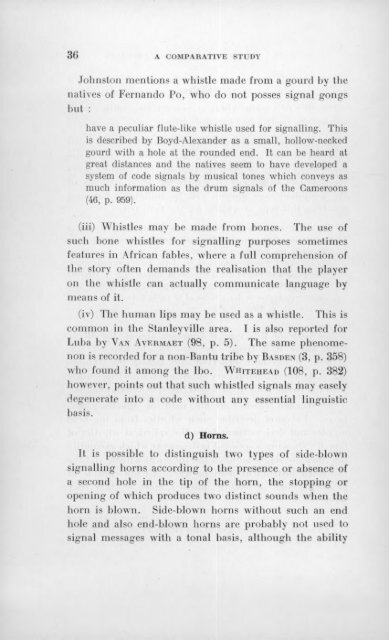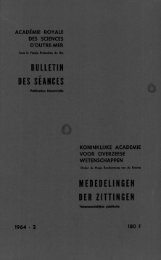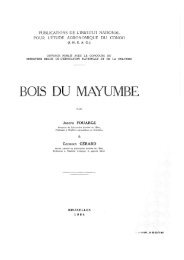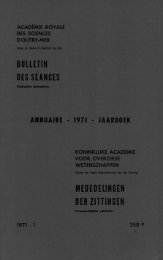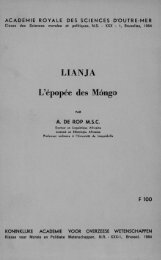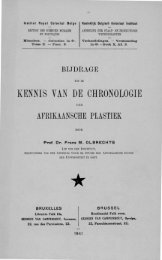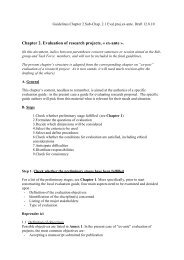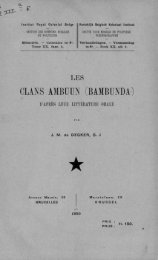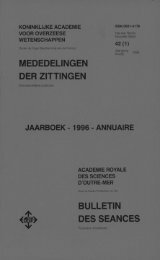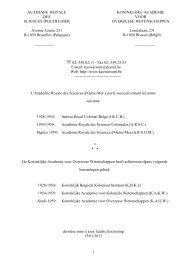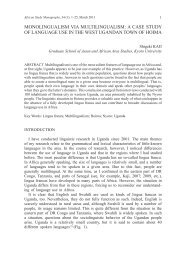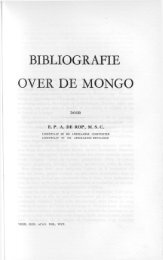CENTRAL AFRICAN GONG-LANGUAGES
CENTRAL AFRICAN GONG-LANGUAGES
CENTRAL AFRICAN GONG-LANGUAGES
- No tags were found...
Create successful ePaper yourself
Turn your PDF publications into a flip-book with our unique Google optimized e-Paper software.
36 A C O M P A R A T IV E STUDYJohnston mentions a whistle made from a gourd by thenatives of Fernando Po, who do not posses signal gongsbut :have a peculiar flute-like whistle used for signalling. Thisis described by Boyd-Alexander as a small, hollow-neckedgourd with a hole at the rounded end. It can be heard atgreat distances and the natives seem to have developed asystem of code signais by musical tones which conveys asmuch information as the drum signais of the Cameroons(46, p. 959).(iii) Whistles may he made from hones.The use ofsuch bone whistles for signalling purposes sometimesfeatures in African fables, where a full compréhension ofthe story often demands the réalisation that the playeron the whistle can actually communicate language bymeans of it.(iv) The human lips may be used as a whistle.coinmon in the Stanleyville area.Luba by V a n A v e r m a e t (98, p. 5).This is1 is also reported forThe same phenome-rion is recorded for a non-Bantu tribe by B a s d e n (3, p. 358)who found it among the Ibo. W h j t e h e a d (108, p. 382)however, points out that such whistled signais may easelydegenerate into a code without any essential linguisticbasis.d) Horns.It is possible to distinguish two types of side-blownsignalling horns according to the presence or absence ofa second hole in the tip of the horn, the stopping oropening of which produces two distinct sounds when thehorn is blown. Side-blown horns without such an endhole and also end-blown horns are probably not used tosignal messages with a tonal basis, although the ability


